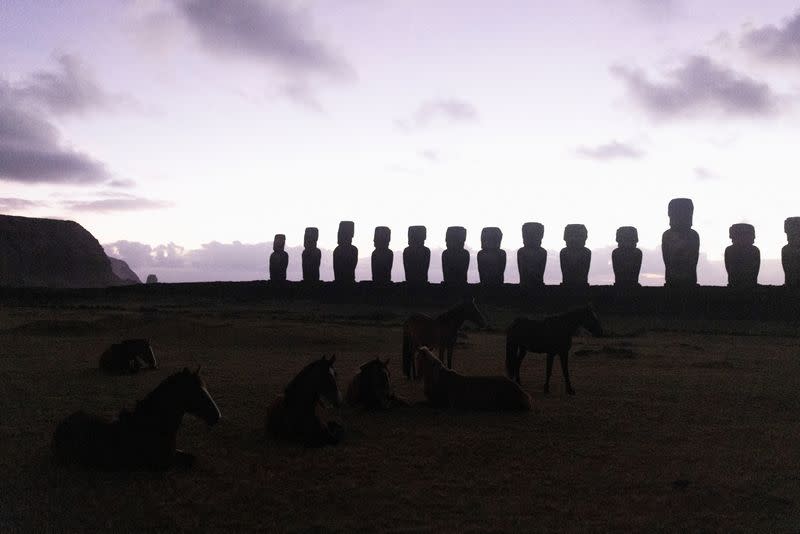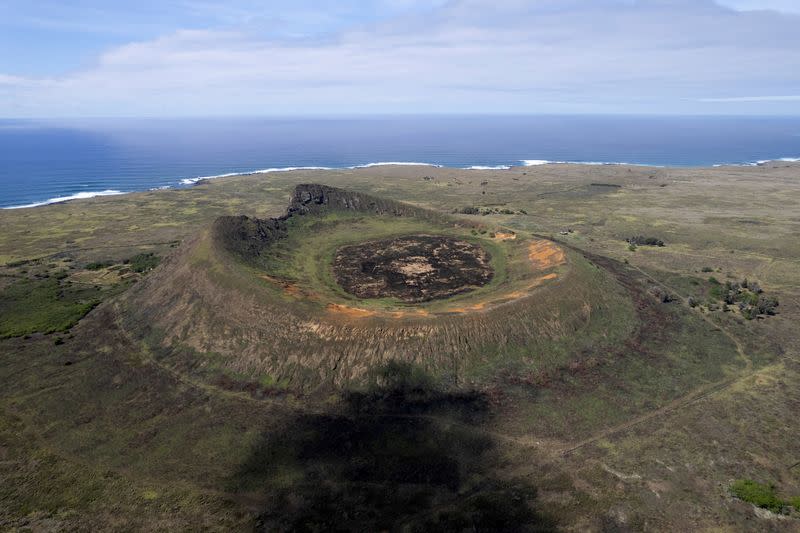Scientists uncover new Easter Island moai statue in dry lake bed
SANTIAGO (Reuters) - Scientists have found a previously undiscovered moai on Easter Island, uncovering the large stone statue in a dry lake bed on the tiny, remote island in the middle of the Pacific.
Geologists were studying the site after fires swept through the area last year. It could mean more figures and tools used by the ancestral Rapa Nui people are buried nearby in the once-underwater site, scientists said.
"This is the first time, from what I understand, that something has been found in the basin," said archaeologist Jose Miguel Ramirez.
It meant that the lake had likely dried at some point in the past, and perhaps the Rapa Nui were taking advantage of that to move the statue, he added.
"I think more (moai) are going to keep showing up," Ramirez said.
Easter Island, a Chilean territory some 2,200 miles (3,540 km) from the mainland, is a protected national park and a UNESCO World Heritage site. Researchers believe the island's first residents arrived more than 1,000 years ago and that its famous monolithic human figures were erected about 400 to 700 years ago.
"What we've seen today is very important, because this is part of the history of the Rapa Nui people," said Salvador Atan Hito, a leader of the Ma'u Henua Indigenous community overseeing the site.
The half-buried, 1.5-meter (5-ft) moai will now undergo tests to determine what state it is in, researchers said. While Easter Island is littered with hundreds of the towering stone heads they face threats from the elements, including the fires which led to this statue's discovery.
(Reporting by Reuters TV; Writing by Fabian Cambero and Kylie Madry, Editing by Rosalba O'Brien)


